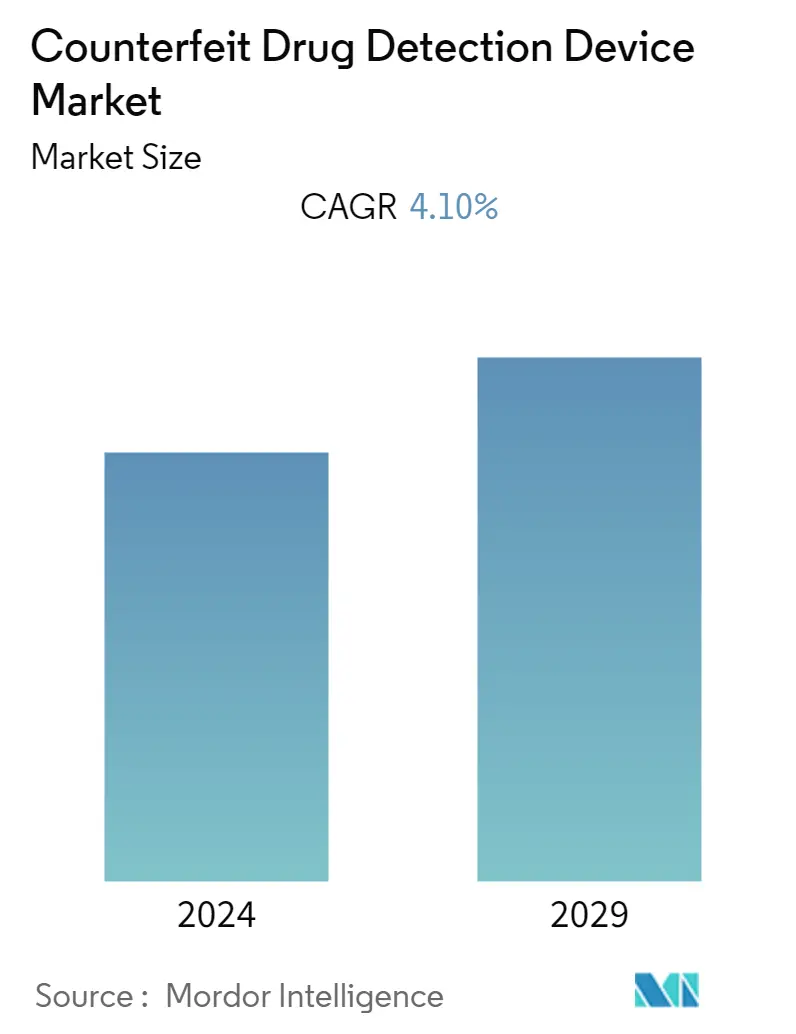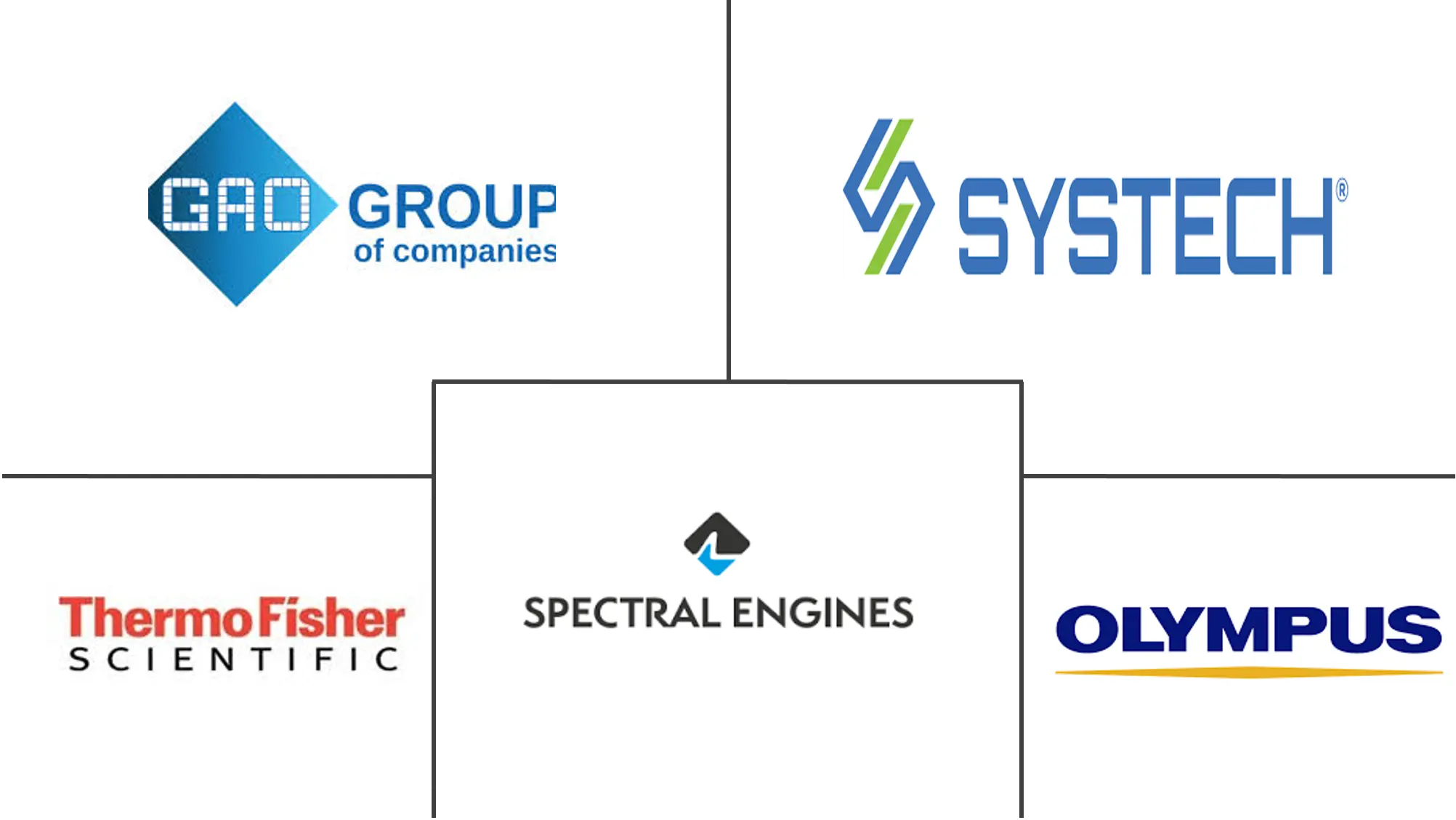Market Size of Counterfeit Drug Detection Device Industry

| Study Period | 2019 - 2029 |
| Base Year For Estimation | 2023 |
| CAGR | 4.10 % |
| Fastest Growing Market | Asia Pacific |
| Largest Market | North America |
| Market Concentration | Low |
Major Players
*Disclaimer: Major Players sorted in no particular order |
Need a report that reflects how COVID-19 has impacted this market and its growth?
Counterfeit Drug Detection Device Market Analysis
The global counterfeit drug detection market is anticipated to witness a CAGR of 4.1% over the forecast period.
The COVID-19 pandemic significantly impacted drug manufacturing companies in its preliminary phase. The governments of several countries reported drugs and active pharmaceutical ingredients (APIs) were in short supply due to the outbreak. This was due to cross-border trade barriers that had an ultimatum effect on the import and export of medicinal products, including drugs, resulting in the rise of counterfeit medicines on the market. As per OECD updates from July 2021, the COVID-19 crisis heightened the dangers posed by the global trade in counterfeit pharmaceutical products. Health and safety issues arose when most of the population ordered falsified medicines online since these often needed to be correctly formulated and contain unsafe ingredients. Thus, tackling this global scourge became even more acute and urgent during the pandemic, boosting the use of several counterfeit drug detection devices. Moreover, as per the analysis, this amplified introduction of counterfeit drugs within the market, along with growing volumes of falsified medicines in developing countries due to a lack of stringent regulatory and standardized processes, augmented the demand for counterfeit drug detection over the post-pandemic phase.
Furthermore, the emphasis on advanced surveillance in the supply chain, the shifting trend from packaging security to on-dosage security, and supportive government legislation are some drivers bolstering the market's growth.
In addition, the rising number of counterfeit drugs is one of the major factors propelling the growth of counterfeit drug detection over the forecast period. Due to the COVID-19 pandemic, counterfeit products increased on the market owing to the crunch in the supply side of drugs. For instance, according to the WHO report, in 2021, the number of cases of substandard and falsified (SF) medical items increased by 52% from 2020. Recently, most incidents involved COVID-19-related medical products, such as vaccines, medicines, COVID test kits, antibiotics, face masks, and sanitizers. In 2021, WHO's surveillance and monitoring system for substandard and counterfeit medical products discovered fraudulent versions of the COVID-19 vaccine COVISHIELD in India and Uganda.
Moreover, a study published in May 2022 in SAGE Journals to describe the law enforcement oversight of falsified drugs by the US FDA from 2016 to 2021 stated that 130 unique enforcement actions were against counterfeiting organizations and individuals. Altogether, 64.6% of enforcement actions implicated counterfeit products marketed and sold over the internet. In 84.6% of activities, counterfeit medicines were sold without a prescription, and in 33.1% activities, the products were marketed as dietary supplements. Sexual dysfunction, anabolic muscle building, benzodiazepines, opioids, stimulants, and dermatologic drugs were the most counterfeited. China was the most predominant country to create counterfeit medicines, followed by India, Turkey, Pakistan, and Russia.
Likewise, pharmaceutical companies are incorporating counterfeit drug detection devices into their supply chains, making them more efficient and enhancing patient safety while saving time and money. For instance, in June 2022, AstraZeneca integrated RFID into its supply chain and had remarkable success dispensing over 30 million RFID-enabled Diprivan syringes.
Thus, these factors mentioned above contribute to the market's growth. However, low awareness about counterfeit drugs will likely limit the market's expansion.
